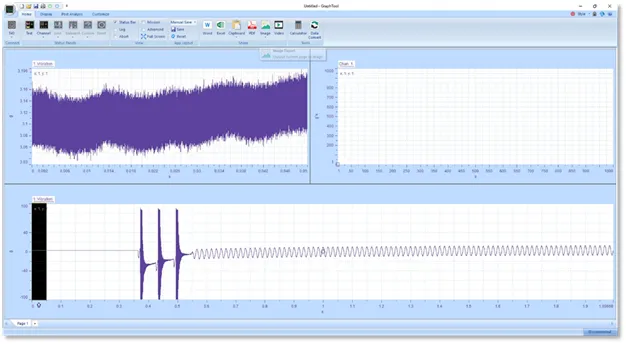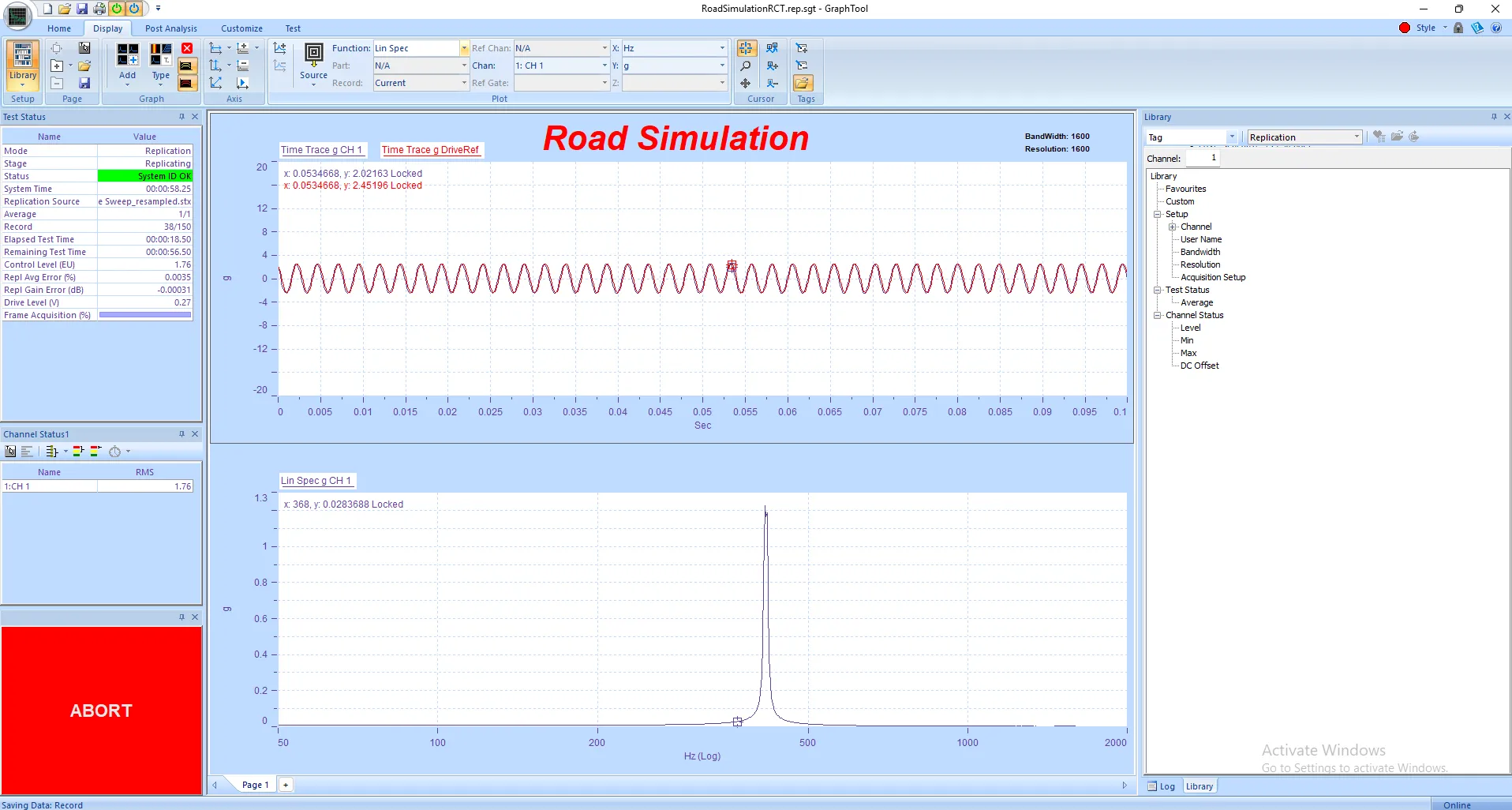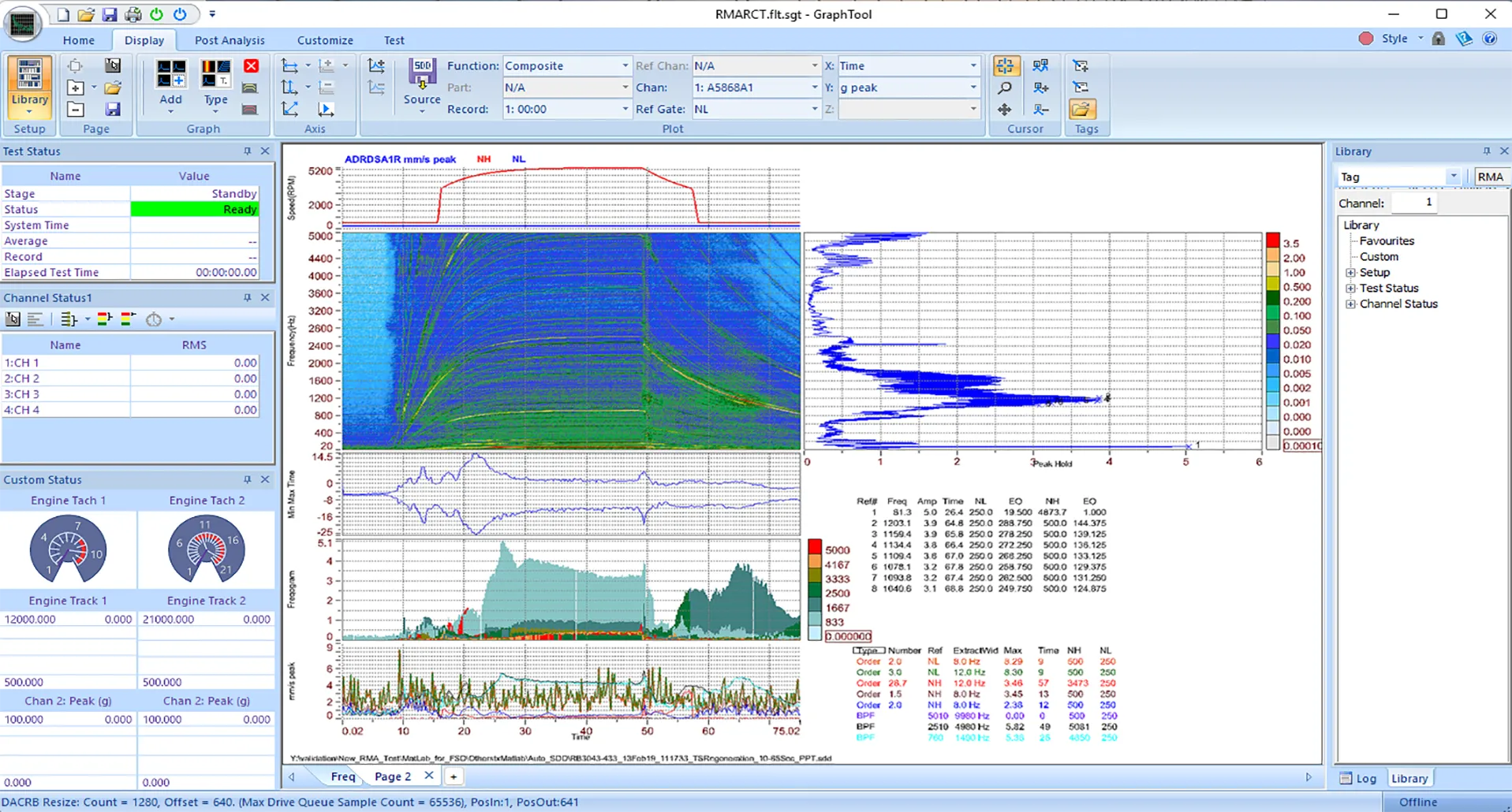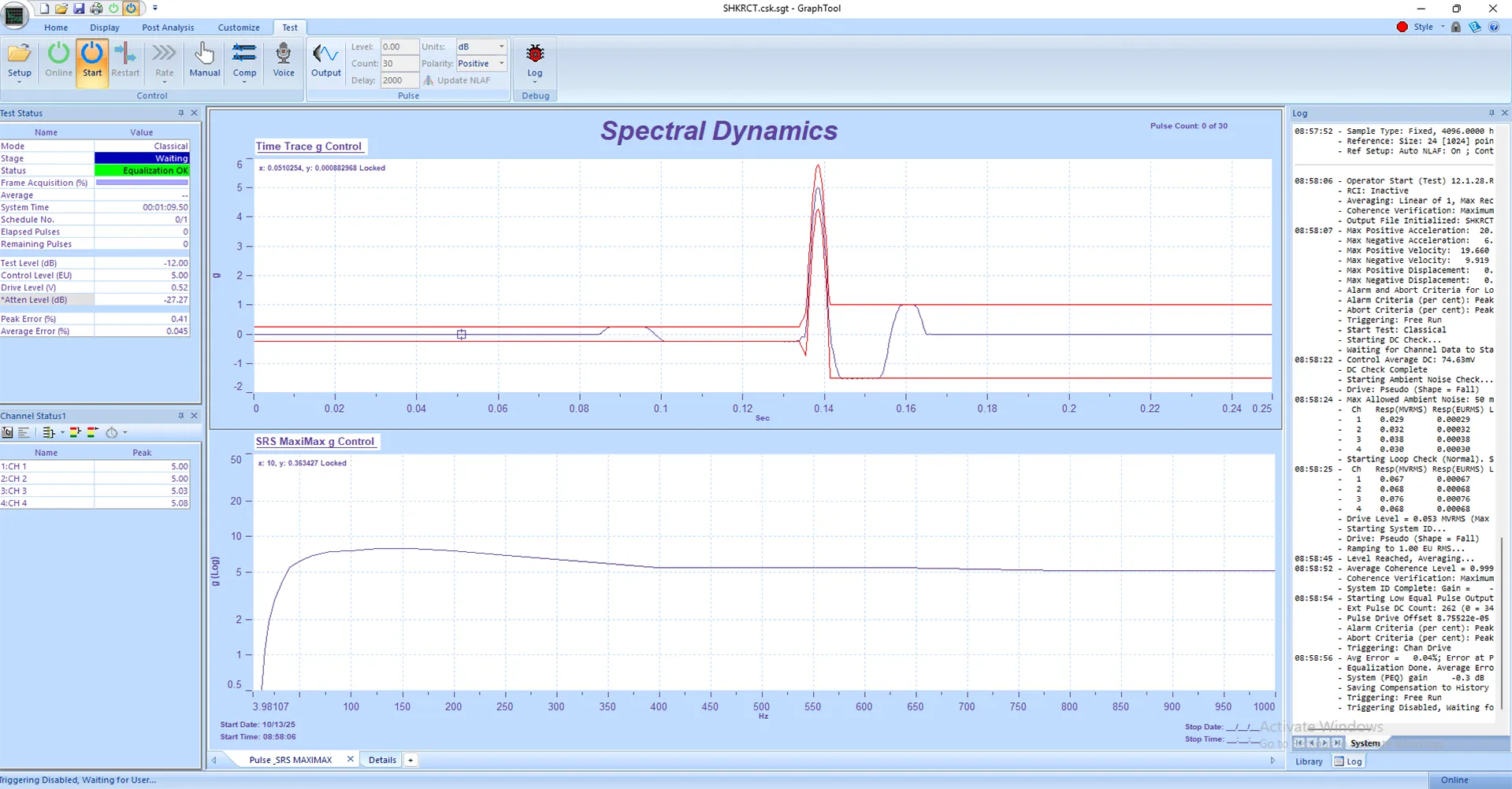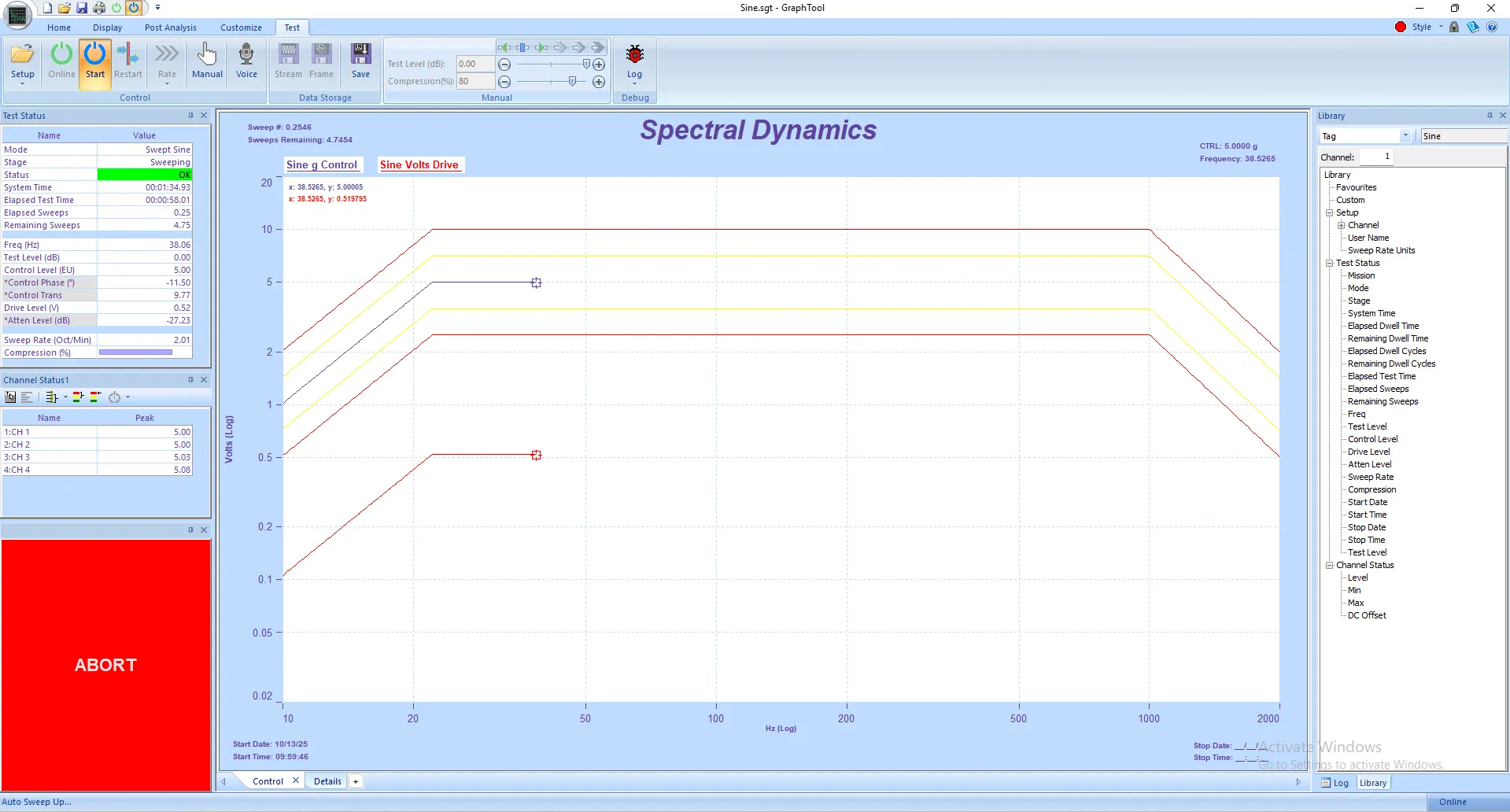Time Domain Analysis, or TDA, in Panther is all about capturing and replaying the actual motion of a structure over time. Instead of just looking at frequency responses, TDA records the time history of measurements from transducers, giving you a direct look at how things move, vibrate, or change moment by moment. It's particularly brilliant for analyzing events that happen quickly or aren't steady-state, like machine run-ups, shock events, or when a system's properties change during a test.
For post-test analysis, TDA is super powerful because you can:
• Replay the recorded motion as a 3D animation, which is fantastic for visualizing exactly *how* a structure behaved during an event.
• Use tools like the "Time Stream" graphs (Compressed, View, and Edit) to examine the detailed time-domain data. This lets you zoom in on specific moments, apply filters to clean up the data, or even edit points if needed.
• Integrate acceleration or velocity data to get displacement measurements, giving you a more complete picture of the physical response. Basically, it turns raw time-history data into a dynamic replay and detailed investigation tool, helping you pinpoint the root cause of dynamic issues.
